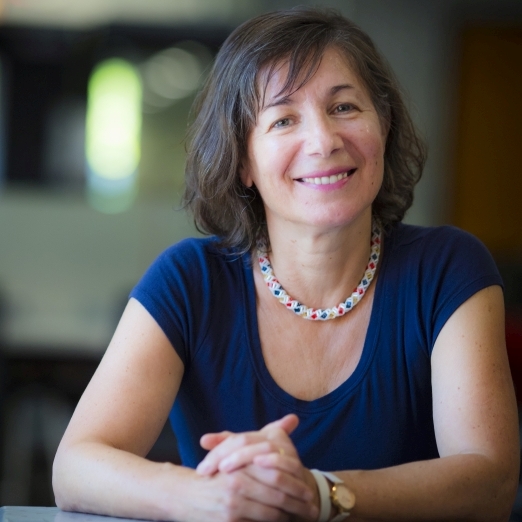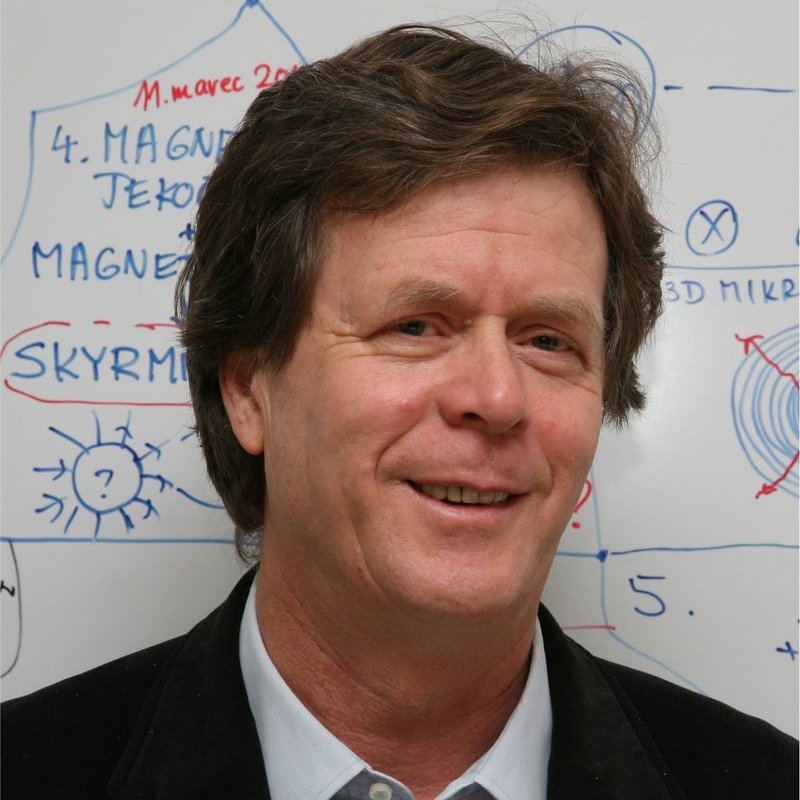
Eugenia Etkina
Graduate School of Education, Rutgers University, United States of America
Conceptual Model of Physics Teacher Preparation: Developing Habits of Mind and Practice through Apprenticeship in a Community
This talk will describe a conceptual framework, developed together with S. Vokos and B. Gregorcic, which is aimed at providing a better understanding of the process of physics teacher formation. Literature on teacher preparation suggests that pre-service teachers (PSTs) learn best when they are immersed in a community, which shares a common vision of good teaching and helps PSTs develop requisite knowledge, skills, and dispositions consistent with that vision. However, often due to the time pressures and complexities of classroom environment a teacher cannot afford multiple considerations and deliberations with oneself before every decision. We therefore suggest that good teacher preparation programs should, in addition to the knowledge, skills and dispositions, strive to develop in PSTs productive habits. We group these habits into habits of mind, habits of practice, and habits of maintenance and improvement. I will present examples of those and describe the structure and features of the Rutgers Physics Teacher preparation program that is focused on the development of productive habits. I will also provide evidence from their teaching practice that PSTs indeed develop these habits in the program.

Bor Gregorčič
Department of Physics and Astronomy, Uppsala University, Sweden
Students' embodied interactions during collaborative learning activities in physics
When students work together to learn physics they can communicate in a variety of ways. They can talk, draw, write, wave their hands – gesture, as well as interact with equipment. Sometimes students communicate using physics disciplinary representations and language that we immediately recognise as productive and meaningful from a physics learning perspective (graphs, diagrams, algebraic expressions, scientific language, etc.). But sometimes, students make use of unorthodox and innovative means of expression. We notice this especially when we start paying attention to the students' use of their bodies to perform hand gestures, manipulate materials in their surroundings and even physically touch each other, all in the service of physics learning. In my talk, I will present some findings of the research I did together with my colleagues on the topic of embodied communication in physics learning. I will make a case that if we can learn to »listen« to what and how students are communicating with their bodies, we can better respond to them and improve the possibilities for learning physics. I will also touch on the way distance education, in particular video conferencing, has impacted the embodied aspects of student interactions during collaborative learning activities in physics.

Igor Muševič
Department of Condensed Matter Physics, Institute Jozef Stefan, Ljubljana, Slovenia and Faculty of Mathematics and Physics, University of Ljubljana, Ljubljana, Slovenia
Topology with Liquid Crystals
Topological defects in liquid crystals can be created by a temperature quench across the isotropic-nematic phase transition and they are stabilized either by colloidal inclusions or confinement. Defects appear as point charges or small defect loops that carry a multiple of a half-integer topological charge. Because the total topological charge must be conserved, point charges and loops in nematic liquid crystals always appear in pairs with opposite signs. Like electric charges, topological defects in liquid crystals either attract or repel. Unlike electric charges, topological defects in liquid crystals can be extended into long loops that can be linked and knotted. This talk will describe the experiments under an optical microscope, where we can create and annihilate defects, identify their topological charge, measure the forces between them and knot or link them into topologically exotic structures.

Maja Planinić
Faculty of Science, University of Zagreb, Croatia
What is difficult in learning physics and what we can do about it: The case of wave optics
The questions of what students find difficult in physics and how physics teachers and faculty can help them learn easier and deeper underlie the whole discipline of PER. I will try to address these important questions in the light of the recent findings of our research group on high school students’ understanding of wave optics. Wave optics, a good representative of a difficult topic for high school students, was investigated for the last three years in a research project conducted at the Faculty of Science, University of Zagreb and funded by the Croatian Science Foundation (HRZZ). High school students’ understanding of wave optics was investigated first through 27 demonstration interviews and later with a newly constructed instrument, the Conceptual Survey of Wave Optics (CSWO), administered to 224 students. The results of the interviews and of the CSWO suggested some possible origins of student difficulties, and the existence of several distinct levels of difficulties, which will be presented and discussed. The same research project will continue with a new teaching sequence for high school wave optics that is currently being developed and will soon be applied on ca. 250 high school students in Zagreb. Some preliminary results and expectations will be discussed.

Dagmara Sokołowska
Adjunct in the Faculty of Physics, Astronomy, and Applied Computer Science, Jagiellonian University, Kraków, Poland
Inquiry to Learn
The contemporary world faces the accumulation of unprecedented challenges and crises. Accelerating technology development, rapid climate change, pandemic isolation and its consequences, the refugee crisis, and others provoke reflection on the education of current students and tailoring it to their needs in the future. The teaching format, derived from previous centuries, and based mainly on content knowledge and its transfer, seems less and less coherent with the surrounding reality. Students overwhelmed with massive content do not have time for reflection, comprehension, and development of interest and soon become demotivated at school, which they perceive as a place detached from life. This way, much of the inherent human curiosity and inquiry potential is being lost systematically and on a large scale in times when they are particularly indispensable for societies.
Over the past few decades, policymakers have begun to recognize the need for student development in various domains, advocating the widespread introduction of Key Competences (EU) and 21st-century skills (USA) into education. To this end, active teaching/learning methods and IT tools are widely promoted in education; however, they are only the starts - necessary but not enough. Since keeping the traditional format is safer and more manageable at school and more effortless in standardized assessment, the educational system still incorporates too much recitation and copying. Teachers do not dare to adjust their teaching to contemporary challenges because the system is not flexible, the curriculum is overloaded, and, most importantly, teachers themselves do not become inquirers in their teaching practice. To help them out, universities - the original research communities - may become the pioneering institutions introducing an inquiry approach to teaching through their collaboration with pre-service and in-service teachers, thus starting a revolutionary change in the mentality of the entire educational system.
In my presentation, I will show a few examples of fruitful cooperation between academics and science and physics teachers who participated in EU projects on reinforcing inquiry skills and attitudes in teachers and thus influencing the development of inquiry skills in their learners.

Michael Vollmer
University of Applied Sciences in Brandenburg, Germany
Everyday life objects and phenomena in nature: visualization, understanding, teaching
Phenomena in our daily life and in nature are particularly suitable to attract students of all ages and to raise as well as deepen interest for physics. Most of our initial encounters with such phenomena are due to perception with our eyes, which have limitations regarding spatial, transient and spectral detection. Extending these can lead to many new discoveries of surprising variety which help to understand and teach the underlying physics.
The talk will discuss a number of phenomena, observed with the eye but extending transient detection using high speed and time lapse recordings, extending spatial detection by moving from wide angle long distance scenes to close-by object microscopy, and extending spectral detection by analyzing the electromagnetic spectrum from x-rays via UV and VIS imaging, the NIR, thermal IR and THz range to microwaves.
The selection of respectively discussed topics in nature will range from eclipses, visual ranges, mirages, colors in nature, hot thermal features such as hot pools or geysers to freezing of lakes in winter. Other everyday life observations may deal with skyscraper and window optics, microwave ovens or semiconductor lasers and even CO2 imaging.

Jenaro Guisasola
Applied Physics Department, University of Basque Country UPV/EHU, Spain
Research on designing Teaching/Learning Sequencies: Accomplishment and challenges
Physics teaching has many objectives, such as promoting the development of understanding of the content, fostering interest and motivation for further study, helping students to appreciate the role of science and technology in society, and so on. Physics education research supports these goals by providing fundamental insights into the intellectual, social, and affective processes involved in learning, and by generating new strategies, tools and materials for classroom instruction. Among these practical advances are “Teaching Learning Sequences” (TLS). In the talk I will give a brief review of research focused on theoretical and empirical studies of teaching-learning sequences. As well as, the relationship of this research tradition to the Design-Based Research (DBR) movement. Then, I will focus on the description of DBR as a research methodology, that is, as a procedure that provides guidelines for the development of an investigation. This methodology does not specify theoretical commitments regarding the nature of learning and how those give rise to teaching strategies, but the articulation of those commitments is expected as part of the justification for decision making in the design process. In order to demonstrate the framework, I will present an example of TLS development in the context of introductory physics at university. It will described the evaluation of the TLS, addressing both the capacity of the TLS for involving students in learning the topic and the students’ learning itself.